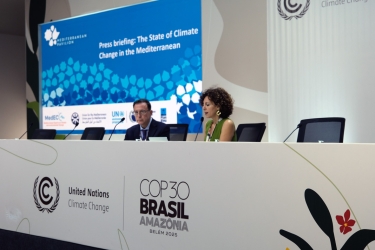Forest soil monitoring in focus as EU Soil Monitoring Law advances

Soils and their health hold a pivotal importance for the future of our planet and its people, as reflected by increasing recognition of their importance at international level. The first ever European Union Soil Monitoring Law (SML) will likely enter into force this autumn following provisional agreement by the Council and Parliament of the EU earlier this year. This important directive aims to establish a shared framework for soil monitoring to enhance their resilience and mitigate the risks posed by contamination.
To ensure that the SML achieves its intended impact, Member States will need to adopt effective sampling-based soil monitoring practices that provide accurate information on the status of and trends in soil carbon stocks, nutrient levels, and biodiversity. However, particularly for forest soils, gaps in existing methodologies mean that such empirical information is not currently available at all, or does not capture the full range of forest soils across the EU. Furthermore, rigorous soil sampling practices and sampling protocols that account for the biologically active layer of forest soils are lacking, presenting an additional challenge. This results in a lack of comprehensiveness, coherence, and reliability of soil information.
The European Forest Institute (EFI) is actively contributing to addressing these challenges through its involvement in the Horizon 2020-funded HoliSoils project. HoliSoils has developed a monitoring methodology that accounts for the specificities of forest soils, as well as the variation in forest soil types across the EU.
As highlighted in a new EFI policy brief, based on HoliSoils’ findings, this harmonised methodology is crucial to facilitate comparability of forest soil monitoring data and findings across the EU in three main ways:
- Development and testing of a harmonised methodology to measure forest soil carbon fluxes and stock changes that can be used in national GHG inventories.
- Identification and testing of advanced soil models that are applicable to national GHG inventories.
- Development and testing of a harmonised methodology for the analyses of soil microbial and faunal communities.
The policy brief also includes recommendations for EU and national policy makers to ensure that the requirements of the EU SML are met, and its goals are achieved. Firstly, all Member States should adopt the HoliSoils’ harmonised methodology for forest soil monitoring. Policy makers should also foster the use of forest soil monitoring networks and protocols developed by HoliSoils that build on existing work and include DNA-based methodology to assess soil biodiversity. Finally, a continuous dialogue with scientists and experts should be ensured to access the latest scientific knowledge to enhance soil health.


